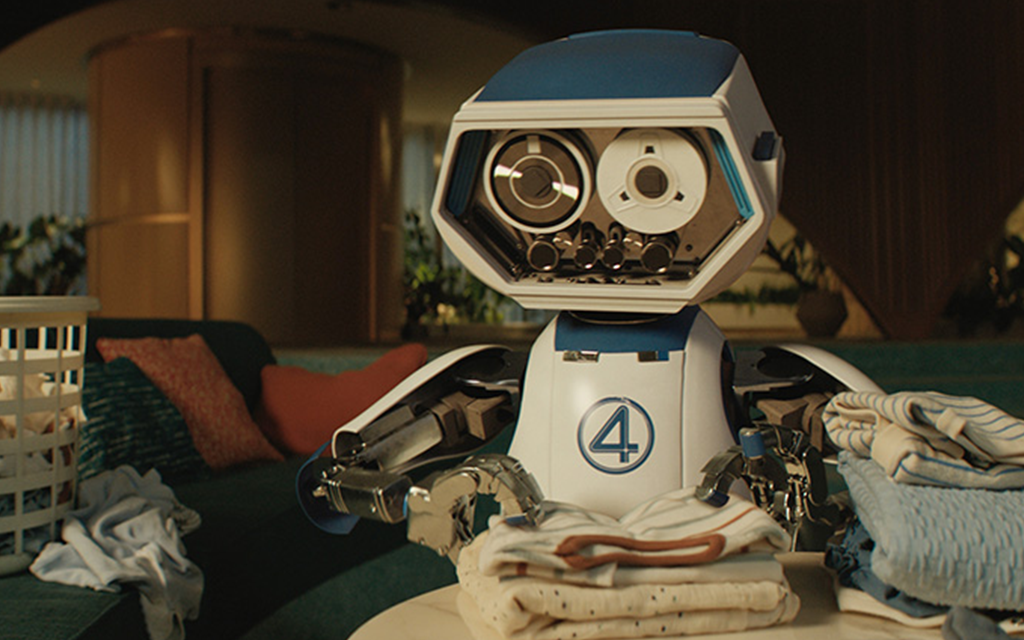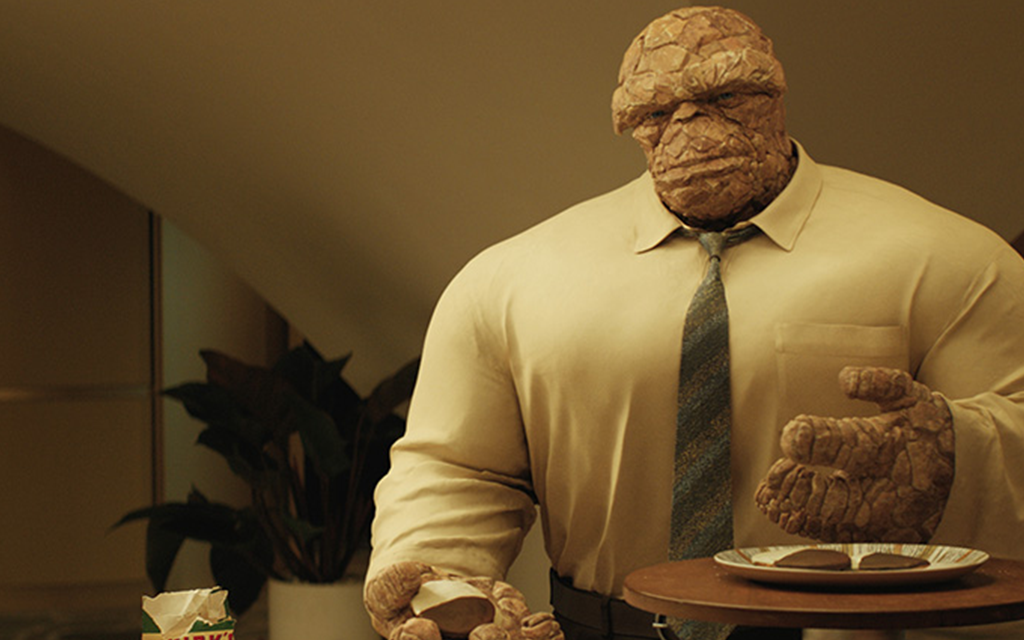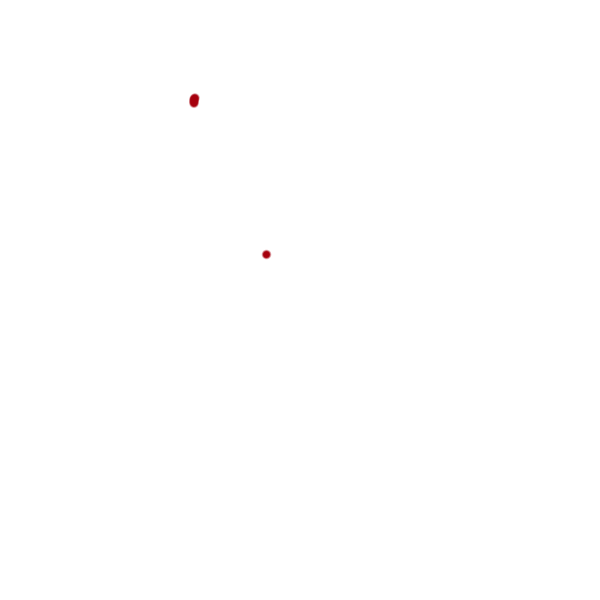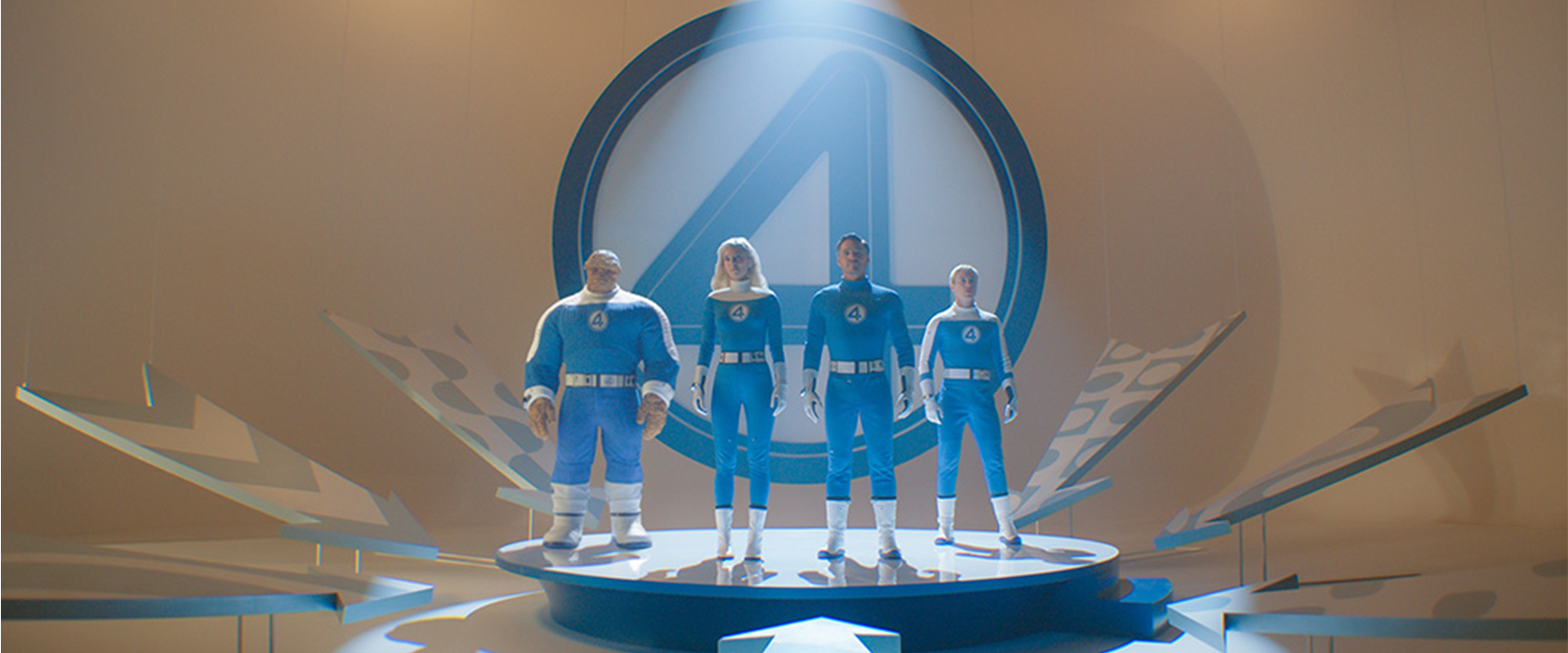Unveiling Digital Domain’s Groundbreaking VFX for Marvel’s « The Fantastic Four: First Steps »
Septembre 22, 2025
Featured in ProductionHUB
From reimagining the larger-than-life presence of The Thing to capturing the delicate expressions of Baby Franklin, Digital Domain pushed the boundaries of visual storytelling in The Fantastic Four: First Steps. Led by VFX Supervisor Jan Philip “Phil” Cramer, the team delivered nearly 400 shots that brought Marvel’s beloved heroes and their world to life. With innovations like Masquerade3, an evolution of the studio’s proprietary markerless facial capture tech first used to shape Thanos in Avengers: Endgame, the artists combined cutting-edge tools with cinematic artistry to create sequences both spectacular and deeply human.
PH: What were your guiding creative and technical priorities when approaching nearly 400 VFX shots for The Fantastic Four: First Steps?
Phil Cramer: For Digital Domain, our main priorities were The Thing and Baby Franklin. We also had plenty of shots with Johnny, Herbie, Sue, and Mr. Fantastic, but we constantly had to ensure we kept focus on the two delivery priorities for our scope of work. With Digital Domain in charge of everything in and around the Baxter Building, we got to carry a lot of the storytelling and acting bits of the show.
PH: How did you balance honoring the legacy of these iconic characters while also bringing something fresh and innovative to the screen?
Phil Cramer: The entire movie put a huge emphasis on keeping things retro. This started with the 60s-inspired design of the city, cars, and outfits. We really tried to embrace the look, which is not typical for the MCU. All the visual effects themselves were supposed to look like a modern interpretation of retro effects. As an example, Sue’s powers were supposed to look graphic in nature focusing on simple color blocking done with modern techniques, while The Thing was heavily influenced by the original design from Jack Kirby, and lots of his costumes were based on comic book episodes. So, grounding them in Marvel lore as well as the 60s retro feel was our core focus.

PH: The Thing and Baby Franklin are standout digital characters. What were the biggest creative or technical challenges in bringing them to life convincingly?
Phil Cramer: Both characters had unique challenges. For The Thing, we wanted to make it clear that the performance was driven by the actor, Ebon Moss-Bachrach. For this, we focused on his expressions, ensuring they would all translate. His eyes were also almost a 1 to 1 match in look. It was critical for us that every acting choice from Ebon was honored. For this, we used a combination of XSENS suits with lots of animation adjustments. For his face, we utilized Digital Domain’s proprietary tool Masquerade3. This allowed us to map Ebon’s acting performance directly onto the Thing.

Baby Franklin, on the other hand, was a different challenge to master. Here, we wanted to deploy every possible approach to re-create our youngest superhero. We hoped this would make it impossible for viewers to know what we were changing (if anything). We utilized everything from simple face replacements to fully CG babies to achieve a consistent look. We needed a very strong asset for the baby as a base. Ron Miller, our Asset Supervisor, created one of the most convincing digital doubles we have ever done to achieve this. To maintain continuity, we had to ensure that the nearly 30 stand-in babies all would look like one continuous child throughout the film.
PH: How did your team ensure that the performances of the actors translated authentically into the digital characters, particularly with the use of Masquerade3?
Phil Cramer: Masquerade3 proved to be a game-changer for us on this film. With all vendors (including postviz) utilizing the data processed by our team, Digital Domain, for their CG characters, everyone started with the same motion, look, and feel. This allowed a higher consistency from vendor to vendor than is normally done. It proved to be so successful that we even did the same for characters that Digital Domain did not contribute to.
All said, the final refinements to the facial performance were made by our fantastic animation team under the leadership of Animation Supervisor Frankie Stellato. These touches will always be needed to get the final art-directed nuances to play.
PH: Can you walk us through the evolution of your markerless facial capture technology from Masquerade 2.0 to Masquerade3, and what new opportunities it opened up for this project?
Phil Cramer: The biggest difference is the markerless workflow for Masquerade3. In addition, we ended up processing all data via the command line, so we ended up processing way more data than ever before. Our Facial Rigging Supervisor, Rickey Cloudsdale, was responsible for implementing this improvement, and we ended up processing 10 times the data. We would not be limited to the actual shot selects, but all vendors could use any data shot during the shoot. This is a huge change and allowed for faster turnaround and a tighter schedule.
PH: Were there specific sequences where Masquerade3 fundamentally changed what was possible in terms of performance capture or emotional nuance?
Phil Cramer: The additional photography was a potential issue, as Ebon could not shave due to his other commitments. This forced us to use Masquerade3 with a beard. This is something normally not possible for any facial capture system, but our data output kept working unchanged at the same speed and quality.
PH: The Baxter Building plays a central role in the film. How did your team approach building and populating such a detailed digital environment that supports both action and character-driven moments?
Phil Cramer: One of the most fun parts of the Baxter Building was to child-proof it using Herbie. We had a fun sequence where we had to ensure all the typical baby proofing is done, but in a 60s style and by a robot. We spent a lot of time researching childproofing tools from that era and combining them with the fun, stylized look of the Fantastic Four. We also got involved in the kitchen and helped our characters make delicious meals. This was particularly fun, as Ebon is known for his TV show, The Bear, which is all about cooking.
PH: What role did VFX play in capturing the “day-to-day dynamics” of the Fantastic Four as a family unit, not just superheroes?
Phil Cramer: Our main goal during the shoot is to stay out of everyone's way. We want to make sure no one has to think about technology or VFX. We are there to advise or come up with cool looks for the filmmakers, but we also want to avoid anything that makes their work more difficult. A good example of this is the markerless facial capture for Ebon (The Thing). We were able to avoid the painful and time-consuming process of applying markers for hours before the shoot and making touch-ups during filming. He simply puts on the helmet-mounted camera and performs.
PH: How did you collaborate with the filmmakers to ensure the VFX integrated seamlessly with the film’s tone and narrative?
Phil Cramer: During the shoot, I had the opportunity to work with the team from Marvel to ensure we got the best possible data for both the baby and Thing, in addition to Silver Surfer and Galactus. It helped a lot to be very early on involved with the character design and data acquisition. It ensures we are in tune with the creative direction and can ensure we are hitting those goals.
PH: Were there any creative breakthroughs or unexpected challenges on this project that stand out as defining moments for you and the team?
Phil Cramer: We did a lot of testing early on to understand how to best tackle Baby Franklin. My own son Cosmo, who was at the time about 10 months old, became our test baby. We had the unique opportunity to do test shots using Cosmo, with my wife being directed by Matt Shackman. This was a wonderful experience and helped us understand how to best capture, scan, and recreate a baby. This process became critical once we were on set and needed to pick the hero baby that would be cast to play Franklin.
PH: With the advances made on Fantastic Four: First Steps, where do you see the next frontier for VFX in superhero storytelling?
Phil Cramer: I always feel the story is king. Matt Shackman focused heavily on making each character relatable and grounded. In particular, I’m drawn to the vulnerability of The Thing. He is struggling with his powers and odd deformations, trying to conceal them with various outfits and behind a growing beard. These qualities are not typical for CG characters, but contribute to them feeling like a real, living, and breathing being. We love working with the filmmakers to bring these characters to life.
PH: What lessons from this film will shape Digital Domain’s approach to future projects?
Phil Cramer: Using Masquerade3 as a central hub for all characters on a film was eye-opening. It provides consistency for each character and allows us to see facial performances from the postviz level onwards. I feel this was critical for the success of the show, having characters being shared by multiple vendors under a tight deadline. In addition, being markerless and allowing the actor to grow a beard for re-shoots was something we had never done before, and we overcame with great success.


